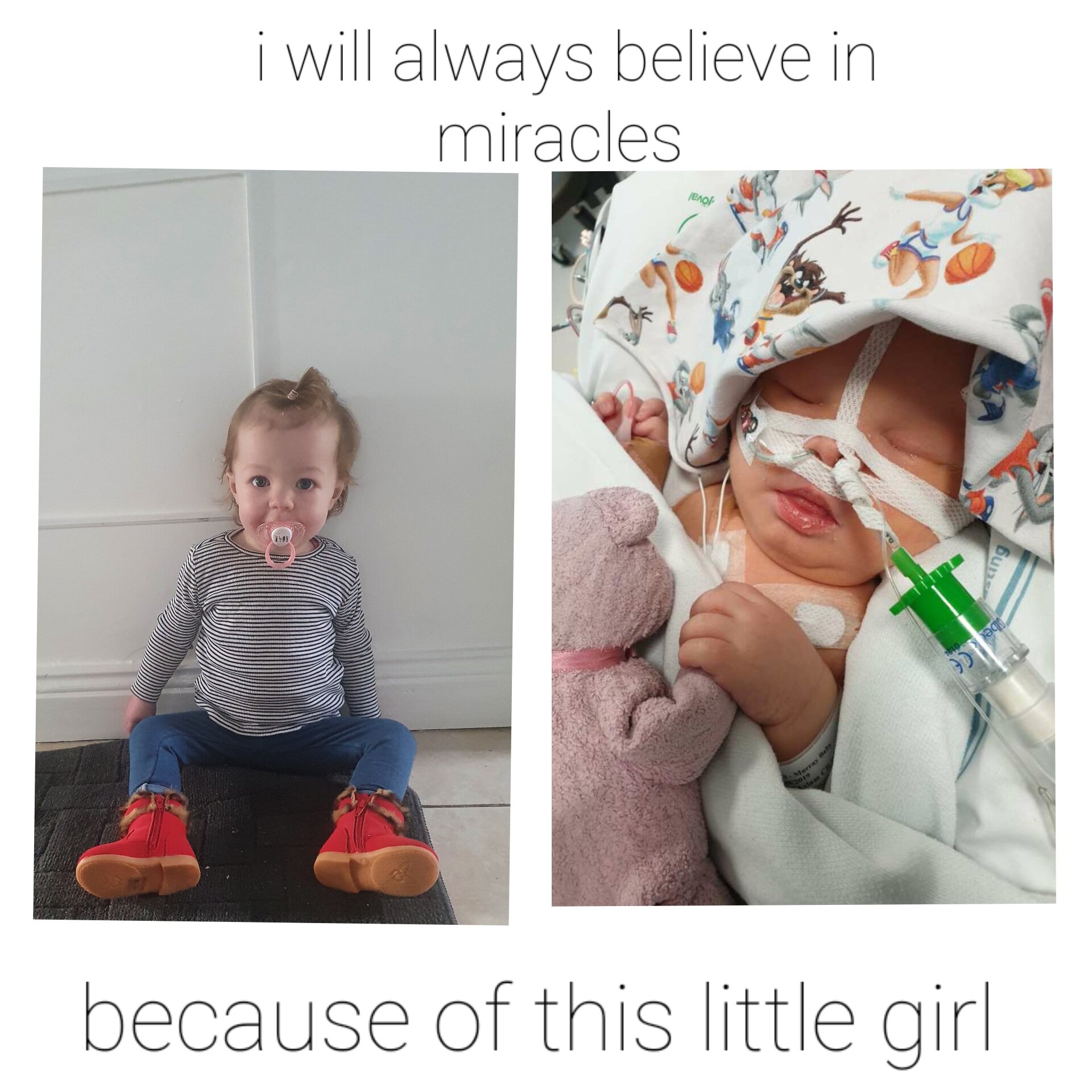Jorja’s Story - Congenital Diaphragmatic Hernia (CDH)
Our little Jorja Kate entered the world on a rainy Friday at 11:20 am, kicking and screaming, weighing 8lbs 6 oz. She looked so perfect. You would have never known things were wrong on the inside.
Since the minute I found out I was expecting Jorja, my instinct told me something was wrong. I had a nervous sick feeling I couldn't shift. Then at a routine 20-week checkup, something was wrong. Her tummy wasn't where it was supposed to be, and her heart was tucked in under her right arm. A week later, we got the official diagnosis, Congenital Diaphragmatic Hernia (CDH). The week later, they sent us to another county to check on her heart, which thankfully was structurally perfect although in the wrong place. She was considered a mild case.
After birth, she went downhill very quickly. They told us to prepare for the worst because her condition had a very low survival rate. Ten hours later, I got the call that it was time for ECMO. I hadn't even had the chance to meet her yet. Due to the lack of staff in the maternity hospital, there was no one available to bring me to meet her. At just over 12 hours old, I met my baby girl thanks to a young nurse who stepped up and said she would bring me for an hour. She was 1kg heavier than at birth due to all the fluid. She was grey and so sick. Because of the lack of funding in Ireland, Jorja had no choice but to leave Ireland. It was either leave Ireland or leave her to slip away. She was thankfully transferred to Stockholm in Sweden. Hours after the C-section, I knelt outside the Children's Hospital and watched my newborn be taken by ambulance to the airport. Three days after the C-section, I packed my bags, got on a flight with my 2-year-old boy, and flew to be with my baby girl. She had surgery at six days old. Everything went according to plan. Her tummy was left open and then closed up two days later. Because of the reoccurring bleeding and swelling in her wound, she had four more procedures before she came off ECMO successfully. The first time they tried to take her off ECMO, the cannula tore her neck, and she hemorrhaged, but they worked fast, and all was okay. She was weaned off nitric and began breathing on her own.
Exactly four weeks old, she returned to Ireland. Back home, she went into a pulmonary hypertension crisis four times, where she brought blood up to her ventilator and lost all color, and went limp. At seven weeks old, she successfully came off her ventilator onto CPAP hi-flow at night and low-pressure prongs during the day. The ward was in our grasp. But then Jorja began to vomit bright yellow, and doctors were concerned. The x-ray and dye test results confirmed that she had herniated at eight weeks old, and her bowels were back up in her chest. She was ventilated and brought to surgery again. The doctors repaired her synthetic patch, and two days later, she was off the ventilator and was thriving on room air, breathing herself. A week later, they moved us to a ward, and she came off her NJ tube. We were transferred to our local hospital ten days later, where she stayed for 14 days due to RSV bronchitis. She's been home since before Christmas 2019. She came home on an NG, but we have successfully weaned off that, too. Now she eats everything and anything at 17 months old and has just started walking. She has good and bad days and suffers greatly from bowel complications. I'm still very nervous. I watch every move just in case she goes downhill. She has defied all the odds. Home is where she belongs with her big brother, Leo. We are forever proud and grateful for her. There were many times we thought it was the end. We can't say thank you enough to all the healthcare workers for saving our warrior princess.



